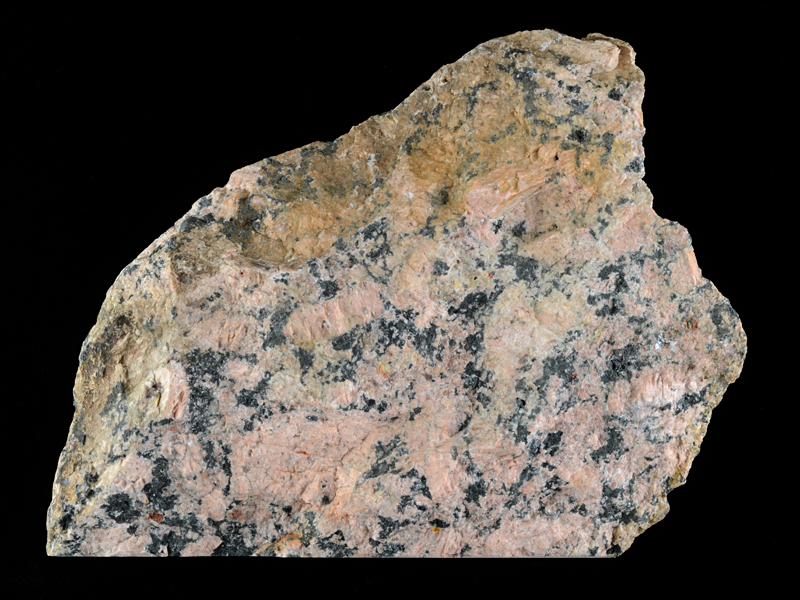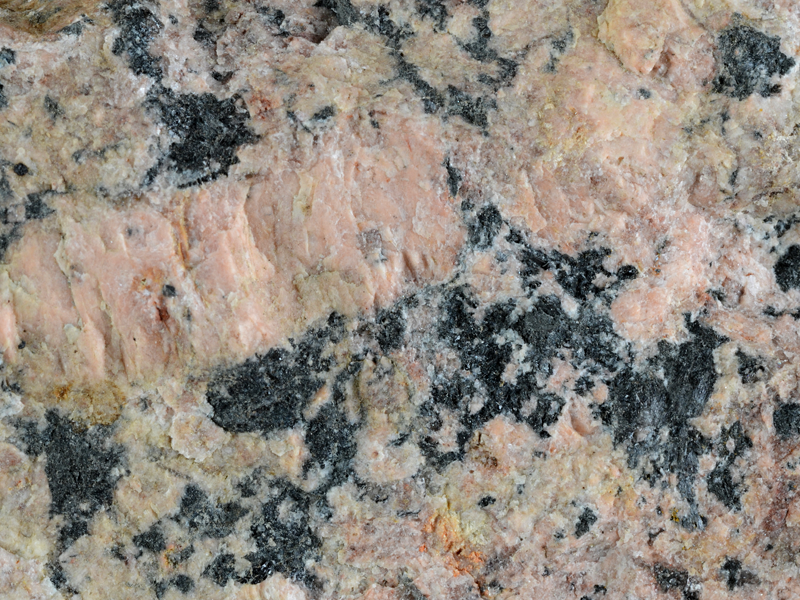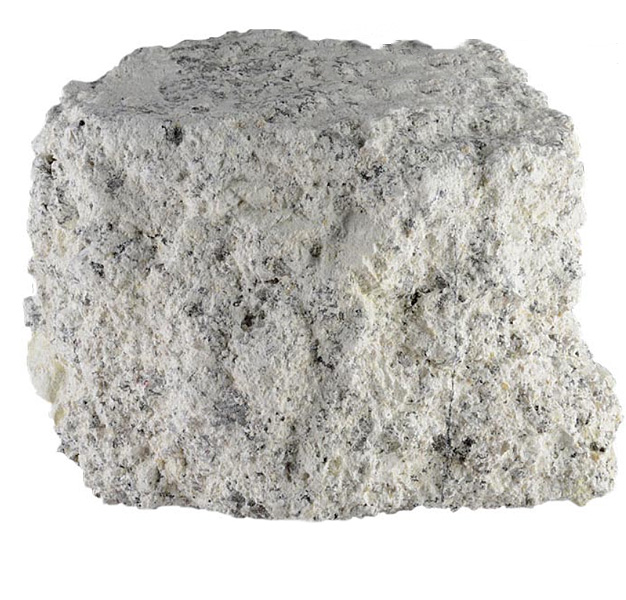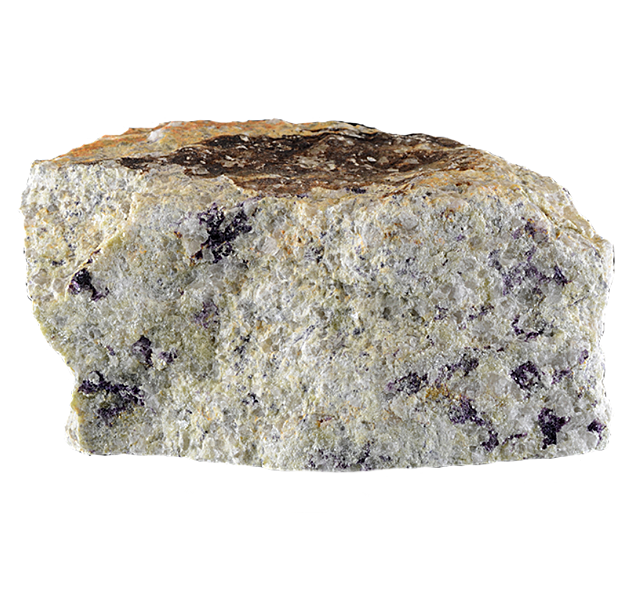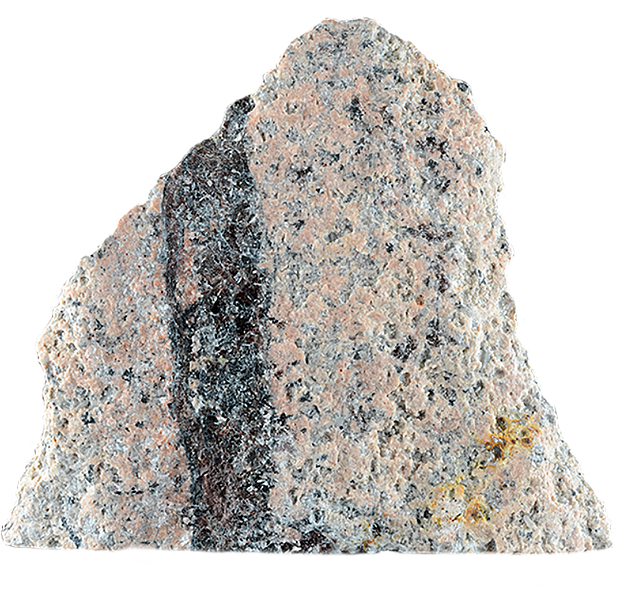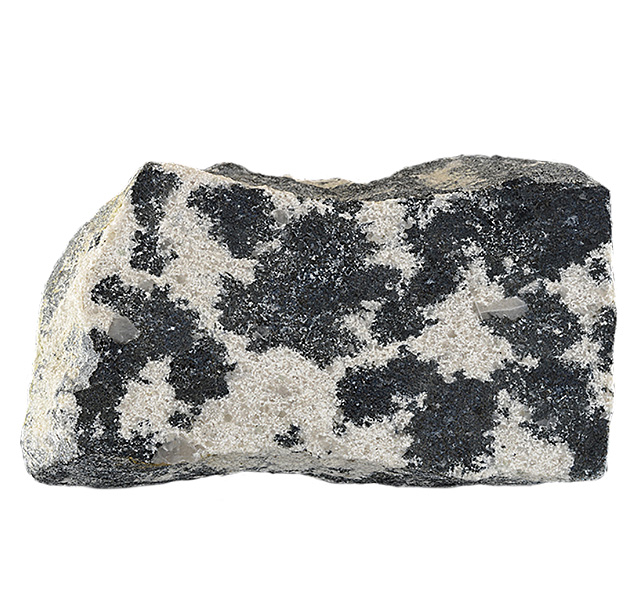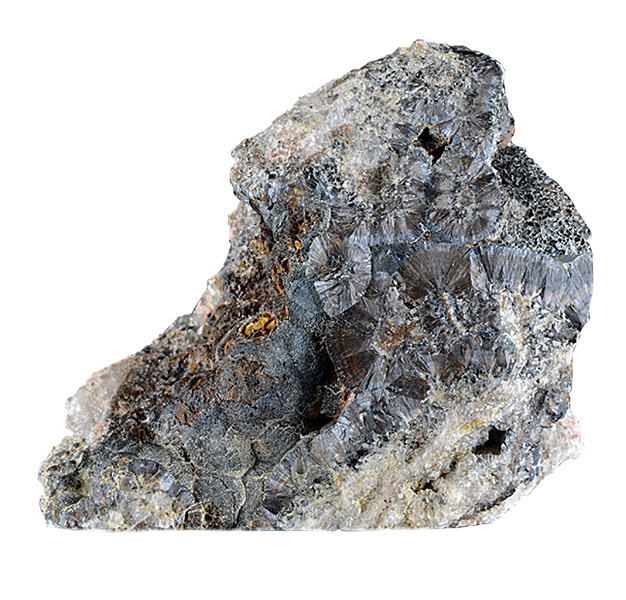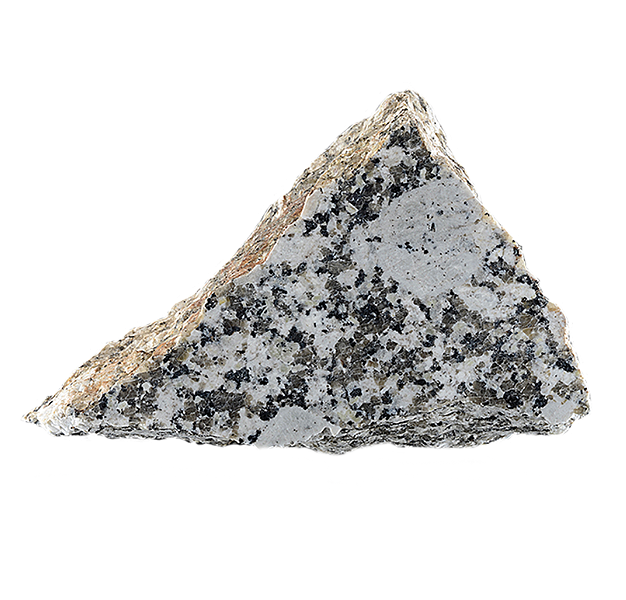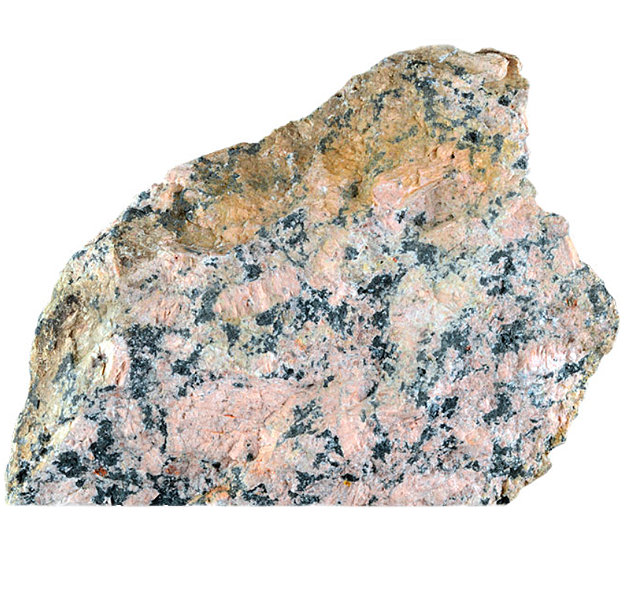
Fact sheet
Luxullianite is a rare type of tourmaline-rich granite named after the village of Luxulyan in Cornwall. Luxullianite is formed from boron-rich pegmatitic fluids concentrated during fractional crystallisation of the biotite-rich St Austell granite complex, which formed around 280 million years ago by partial melting of the lower continental crust during the Variscan orogeny. This sample comes from Conce Moor, St Austell, Cornwall.
In thin section the rock contains altered feldspar that appears cloudy and exhibits little visible twinning. Large quartz grains exhibit no alteration. Two generations of tourmaline are present in the sample: the earlier generation is formed of equidimensional patchy brown and blue grains 0.5–1 mm in diameter; the later tourmaline grains are finer grained needles most commonly associated with the quartz and sometimes radiating bundles of tourmaline needles.
A case study of the St Austell granite complex in Cornwall, England, illustrating the range of rocks associated with a granite intrusion. The earliest part of the complex is a siderophyllite (biotite) granite containing muscovite and tourmaline typical of a SW England granite, with many primary magmatic features.
This early intrusion was followed by the intrusion of an evolved volatile-rich magma which was the driving force behind a series of intense hydrothermal processes as volatiles escaped from this magma and helped to establish an extensive alteration halo (aureole). Boron, fluorine and lithium (as well as water) played major roles in the formation of the second intrusion and in the associated hydrothermal processes. Igneous activity lasted around 18 million years from 282 Ma (siderophyllite granite) to 265 Ma (fluorite granite).
